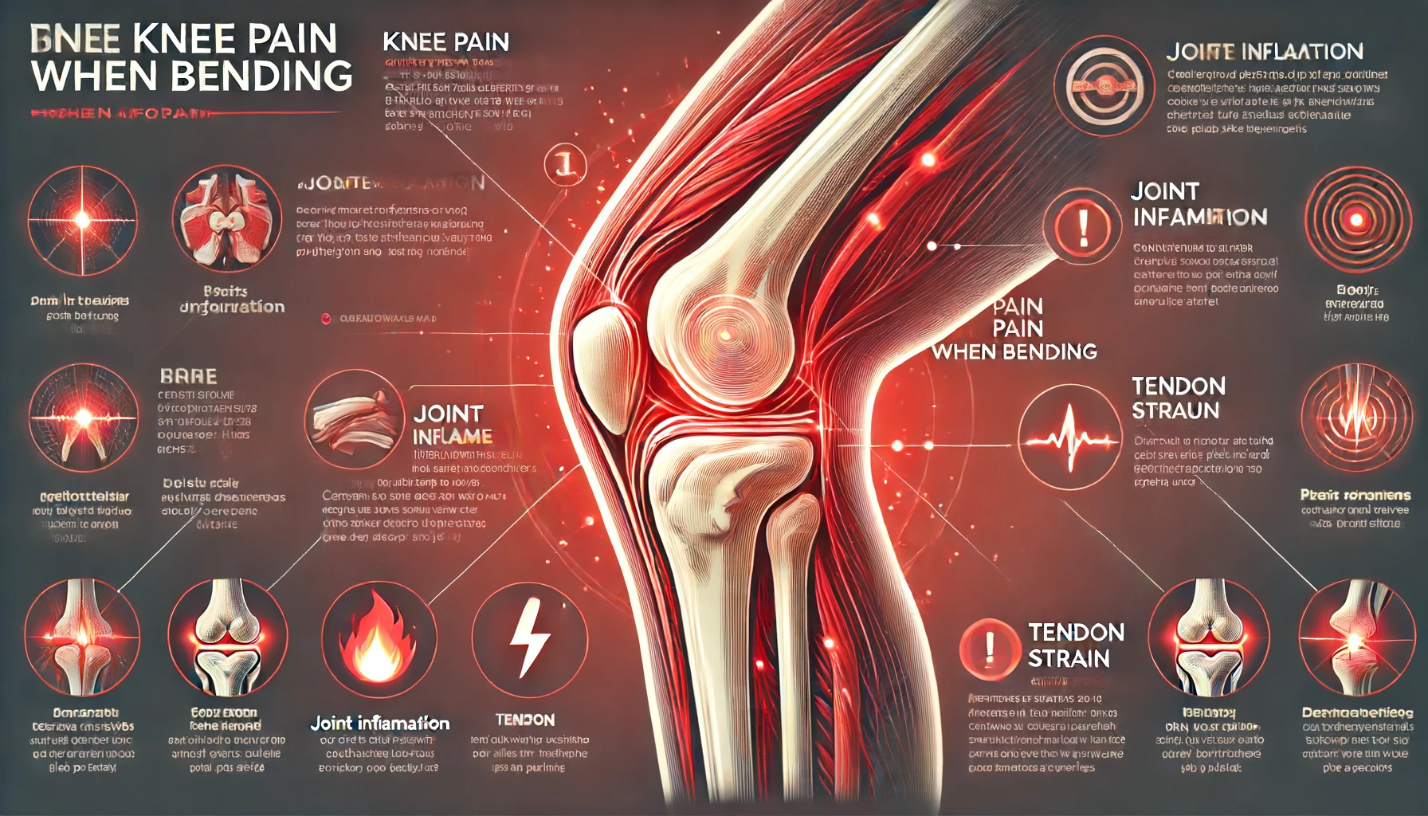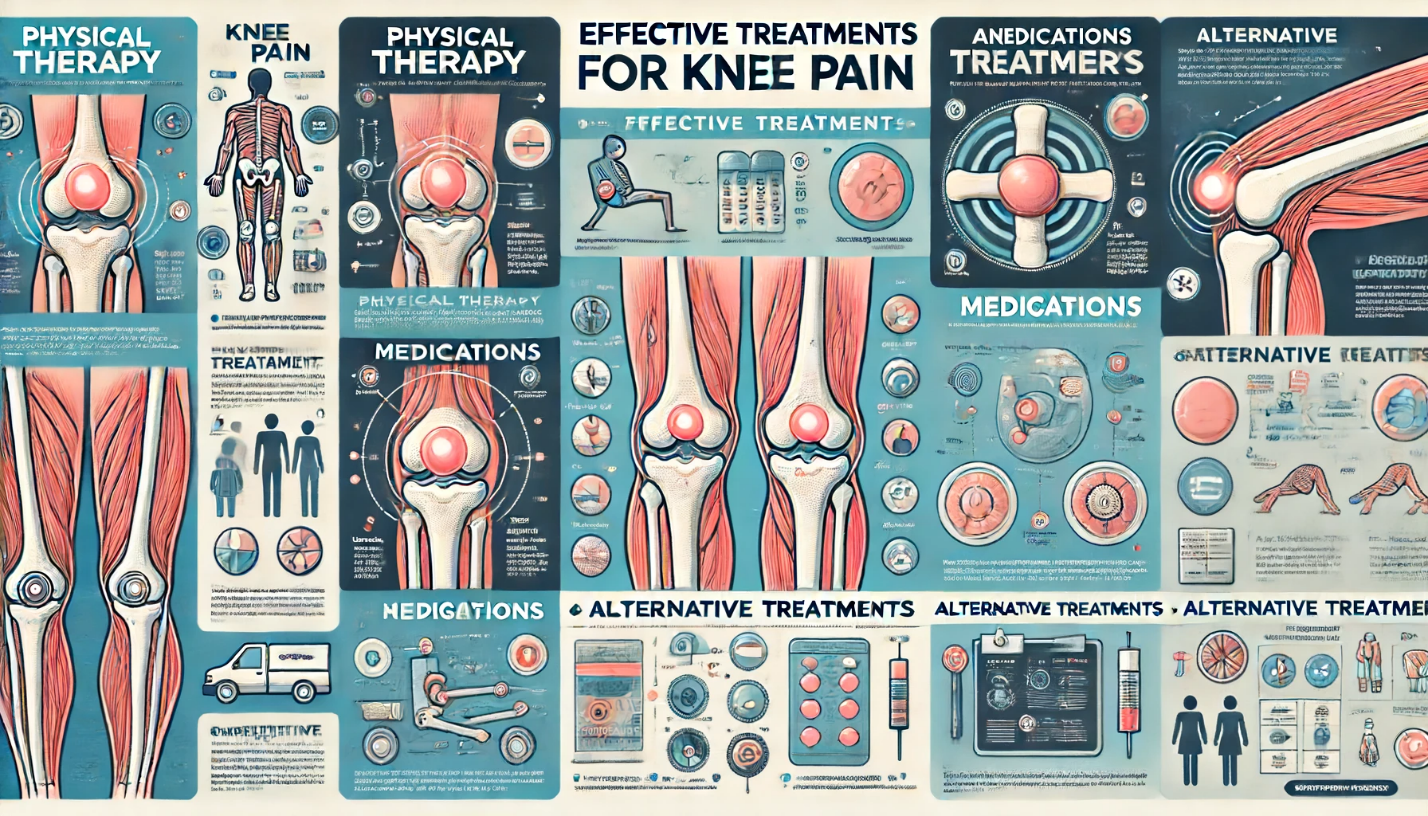Effective Solutions for Knee Pain When Bending: Causes, Treatment, and Prevention
Introduction
Knee swelling can be a debilitating condition, affecting your daily activities and overall quality of life. Whether you’re an active individual or someone dealing with chronic joint pain, understanding the causes and treatments of knee swelling is crucial to maintaining your health and mobility.

Common Causes of Knee Pain When Bending
Osteoarthritis:
Osteoarthritis is a degenerative joint disease that occurs when the cartilage in your knee deteriorates over time. This condition is prevalent among older adults and can cause significant pain and stiffness in the knee
- Symptoms: Pain, stiffness, and swelling; especially after periods of inactivity or overuse.
- Data and Findings: According to the CDC, osteoarthritis affects over 32.5 million adults in the United States (Mayo Clinic) (Knee-Pain-Explained.com).
Tendonitis:
Tendonitis is the inflammation of the tendons around the knee, often caused by repetitive stress or overuse. It is particularly common among athletes and individuals who engage in repetitive knee activities.00
- Symptoms: Sharp pain during movement, tenderness, and swelling around the knee.
- Data and Findings: Studies show that tendonitis is common among athletes and individuals involved in repetitive knee activities (Health).
Meniscus Tears:
A meniscus tear involves damage to the cartilage that cushions the knee joint, typically resulting from twisting motions. This injury is common among active individuals and athletes.
- Symptoms: Pain, swelling, stiffness, and difficulty moving the knee.
- Data and Findings: Research indicates that meniscus tears are a frequent injury among people aged 20-40 (Health).
Effective Treatments for Knee Pain

Physical Therapy
Physical therapy involves personalized exercises and treatments designed to strengthen the muscles around the knee, improve flexibility, and reduce pain. It is an effective treatment for various knee conditions.
- Benefits: Enhances mobility, reduces pain, and aids in recovery from injuries.
- Data and Findings: A study published in the Journal of Orthopaedic & Sports Physical Therapy found that physical therapy can significantly reduce knee pain and improve function
Medications
Over-the-counter pain relievers like ibuprofen or acetaminophen and prescription medications can help manage knee pain and inflammation.
- Usage: Used to reduce pain and inflammation.
- Data and Findings: According to the Mayo Clinic, NSAIDs are commonly used to manage pain and inflammation associated with knee conditions (Mayo Clinic).
Surgical Options
In cases where other treatments fail, surgical options such as arthroscopy, partial knee replacement, or total knee replacement may be considered.
- Considerations: Typically considered when other treatments have failed.
- Data and Findings: The American Academy of Orthopaedic Surgeons reports that knee replacement surgeries have a high success rate in relieving pain and improving mobility (Health).
Preventive Measures for Knee Pain

Exercise and Stretching
Regular exercise to strengthen the muscles around the knee and stretching to maintain flexibility can help prevent knee pain.
- Benefits: Helps in maintaining joint health and preventing injuries.
- Data and Findings: The American College of Sports Medicine recommends regular exercise for maintaining joint health and preventing knee pain (Mayo Clinic) (Health).
Weight Management
Maintaining a healthy weight reduces stress on the knee joints and lowers the risk of developing osteoarthritis and other knee conditions.
- Benefits: Lowers the risk of developing knee conditions.
- Data and Findings: Studies indicate that weight loss can significantly reduce knee pain and improve function (Knee-Pain-Explained.com).
Ergonomic Adjustments
Using proper techniques during activities and ensuring ergonomic workspaces can reduce the risk of overuse injuries and strain.
- Benefits: Reduces the risk of overuse injuries and strain.
- Data and Findings: Ergonomic interventions have been shown to reduce the incidence of musculoskeletal disorders, including knee pain (Health).
Conclusion
Knee pain when bending can be effectively managed and prevented with the right knowledge and approach. By understanding the common causes, exploring various treatment options, and implementing preventive measures, you can take proactive steps toward maintaining healthy knees. For personalized advice, consult healthcare professionals to develop a tailored plan that meets your specific needs.

